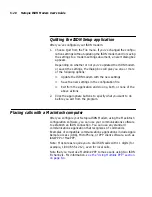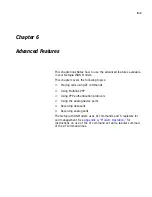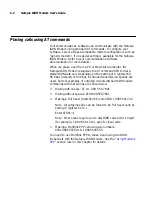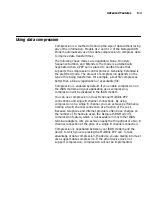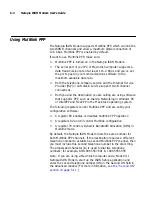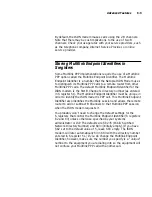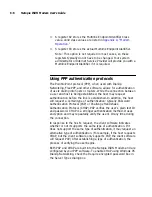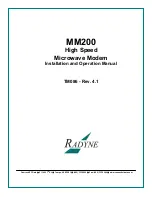
5-12
Netopia ISDN Modem User’s Guide
EndPt ID Class.
The Endpt (Endpoint) ID Class pop-up menu lets
you choose the method by which an Endpoint ID is assigned. An
Endpoint ID is a number that some hosts use to keep track of a
par ticular connection. The available Endpoint ID Classes are None,
Locally Assigned, Internet Protocol, IEEE 802.1 MAC, PPP Magic
Number, and Public Switched Net Director y. In most cases, you
should choose Public Switched Net Director y as the Endpoint ID
Class unless your system administrator or ISP tells you to specify
one of the other classes.
Endpoint ID.
In most cases, you should leave this field empty and
leave the Endpoint ID Class set to its default value of 5 (Public
Switched Network Director y Number). With these default settings,
the ISDN modem will later automatically fill in the Endpoint Identifier
with telephone number 1 (DN1). If your endpoint identifier class is
not 5, obtain the identifier from your Internet Ser vice Provider and
enter it in this field.
CHAP Blocking.
Check the CHAP Blocking box to disable the CHAP
authentication feature. If this box is checked, the Netopia ISDN
Modem will use PAP for authentication. If you are using Multilink
PPP, you must check this box to block CHAP authentication.
Serial Port
The Serial Por t area lets you specify options for flow control, carrier
detect (CD) control, and data terminal ready (DTR) control.
Flow Control.
Use the Flow Control pop-up menu to choose the flow
control option set up in your communications program. Flow control
affects the flow of information between your workstation and the
Netopia ISDN Modem. The available flow control options are None,
XON/XOFF (software handshake), and RTS/CTS (Request to
Send/Clear to Send). RTS/CTS is a hardware handshake protocol.
In most cases, you should choose RTS/CTS unless your system
administrator or ISP tells you to specify one of the other options.























